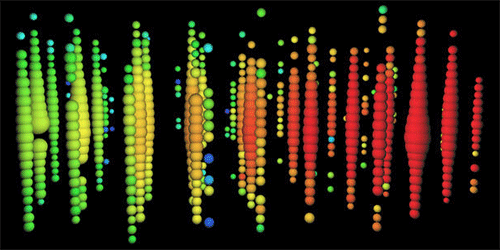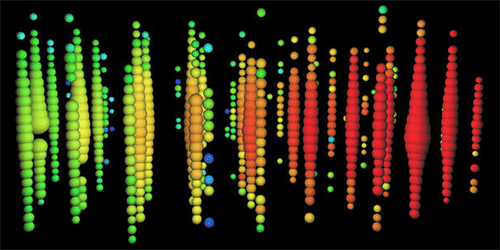Neutrinos from the North
As a one-of-a-kind experiment, the South-Pole-based neutrino detector IceCube has had to be creative to confirm its own discovery. Last year, the collaboration reported 37 ultrahigh-energy neutrinos, many of which appeared to come from powerful cosmic accelerators beyond the Milky Way. Now, the scientists have bolstered this claim by analyzing an independent collection of neutrinos that were likely also generated by extragalactic sources. Unlike the previous set, however, these particles come primarily from the Northern sky.
IceCube consists of an array of 5160 optical sensors that dangle in a cubic kilometer of Antarctic ice. The detector observes neutrinos indirectly, by looking for the charged particles they produce in collisions with atoms in the ice. Muons create linelike “tracks” of radiation, while protons and other hadrons make spherical “cascades.”
In its earlier analysis, the experiment only counted these events if they occurred within the detector volume, ensuring fewer false signals from cosmic-ray muons. The researchers have now relaxed this constraint. But they only count muon tracks whose directions indicate they came from the Northern sky and hence through the Earth. In this way, the planet acts as a filter for cosmic-ray muons, which, in contrast to neutrinos, are unlikely to traverse the Earth intact. The collaboration reports 21 neutrinos (predominantly muon neutrinos) with energies estimated to lie between 100 and 1700 tera-electron-volts. This flux is well above what is expected from atmospheric neutrinos and is consistent with what the detector saw from the Southern sky.
This research is published in Physical Review Letters.
–Jessica Thomas





